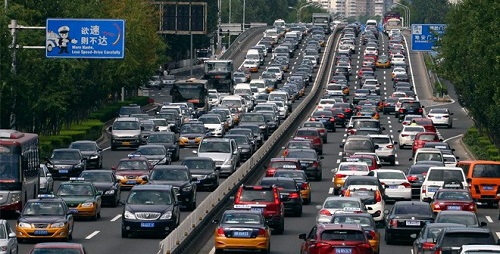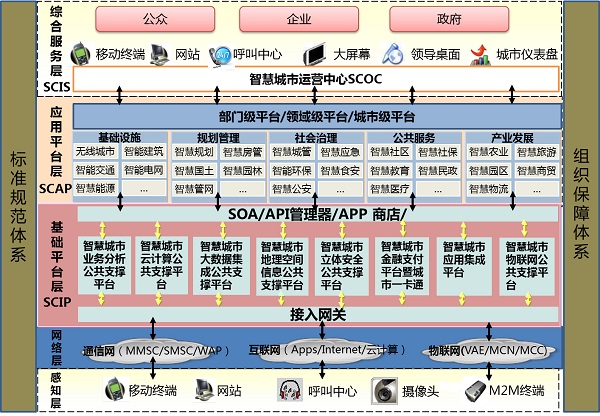随着多年的锐意改革和高速进步,我国的城市化也随着经济社会一同发展到了较高的水平。目前,我国城镇化发展可大致分为四类,由小到大分别是农村城镇化、中等城市转型、大城市超大城市的城市病解决以及区域性城市群的建设。虽然我国的城镇化发展已经处于较高水平,但许多问题依然严峻,突出表现为城市人口激增、住房与交通拥堵严重、城市规划落后、城市产业结构不合理、社会治安问题凸显等。面对我国城市化过程中出现的这些问题,各界学者专家都提出了不同的解决方案,智慧城市建设便是其中备受关注的一个方向。
城市化的快速发展也带来了大量问题
>>>什么是智慧城市?
智慧城市是指充分运用物联网、云计算、人工智能、大数据、移动互联等技术手段,通过感应、传送、整合与分析城市运行的核心信息与数据,对城市管理、公共服务、商业运营等活动作出智能响应,面向城市管理者与居民的大数据决策与应用的高级信息化智能化的城市形态。智慧城市在全球范围内也受到了各国重视,被普遍认为是提高城市经济活力、促进社会文明深度发展的有效措施。根据世界银行的预测,一个百万人口的智慧城市建设,当实际应用程度达到75%时,其他条件不变的情况下,城市GDP将增加至少3.5倍。
正是如此,美国、瑞典、新加坡、日本等国家大力投入智慧城市的建设,以图在下一个城市发展形态的竞争中抢占先机。2014年,国家发展改革委、工业和信息化部、科技部、公安部、财政部、国土资源部、住房和城乡建设部、交通运输部联合起草了《关于促进智慧城市健康发展的指导意见》,成为我国智慧城市建设最重要的指导性文件,也标志着智慧城市建设正式上升为国家级战略。
>>>智慧城市的建设框架
在具体的应用实施层面,智慧城市建设除了必须具备的标准规范体系与组织保障体系,按照不同的应用技术与功能,分为感知层、网络传输层、基础平台层(SCIP)、应用平台层(SCAP)和综合服务层(SCIS)五个层级。
感知层包括移动终端、网站、摄像头、M2M终端等数据采集和输入终端,通过感知层可以获得城市日常运行的核心信息与数据,是组成智慧城市最基础的部分。
网络传输层由各种私有网络、互联网、有线和无线通信网、网络管理系统等组成,相当于人的神经中枢和大脑,负责传递和处理感知层获取的信息。
基础平台层(SCIP)包括了针对城市业务分析、云计算、大数据收集、金融支付等支撑平台,主要负责对城市运行的原始数据与信息进行分析、整合与分发。
应用平台层(SCAP)包含了保障城市正常运行的交通、能源、医疗、教育、民政、物流等职能部门,这些职能部门通过从SCIP获取的数据分析结果,为城市运行提供更加合理、科学、人性化的服务。
综合服务层(SCIS)包括政府、企业与公众三个板块,城市仪表盘、领导决策部门、大屏幕、呼叫中心、网站和移动终端,主要负责承接与实现SCAP提供的服务。
从智慧城市的系统架构上看,感知层到基础平台层(SCIP)、应用平台层(SCAP)到综合服务层(SCIS)之间,对画面信号的传输、控制、管理技术具有极高的要求,这几个层面之间信号传输的稳定、实时和流畅,直接决定了整个智慧城市架构能否正常运转。
针对网络传输方面,“Sun Telecom 浦津”可提供一整套光纤传输解决方案,用于智慧安防、智慧交通和数据中心的建设,为新型智慧城市建设赋能。




 位置 :
首页11
>产品资讯
位置 :
首页11
>产品资讯